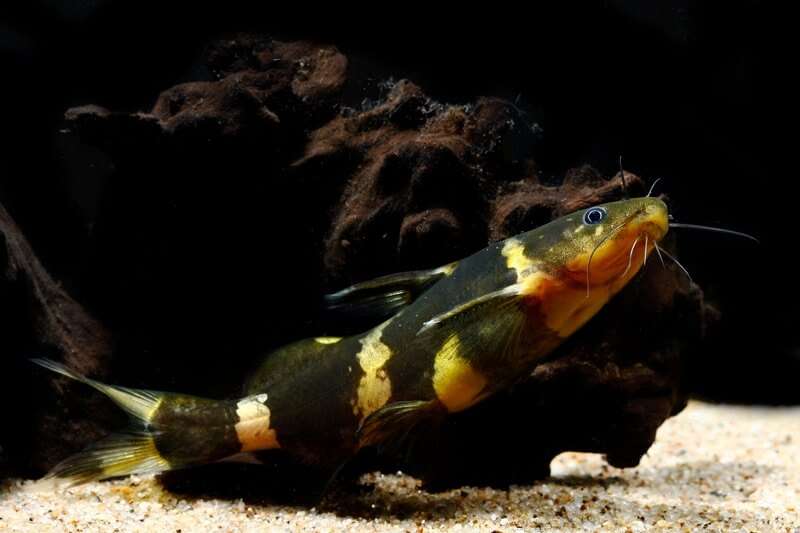
Size
Bumblebee catfish are typically 3 inches long.
Physical Appearance
The bumblebee catfish (Microglanis iheringi) has the appearance of, well, an aquatic bumblebee. Its body is covered in strong black and dull yellow stripes that extend vertically from its head to its tail. The stripes start at its typically black crown and alternate downward.
It possesses a forked caudal fin in addition to a spiny dorsal fin. The longest, widest, and splayed fins on its ventral side are used to help it move through the stony river and stream banks of its native habitat. Not just their fins, but also other parts of their structure, resemble catfish species in the classic sense. Additionally, they have long, cylindrical bodies, large mouths, and lengthy barbels.
Habitat
Early in the 20th century, the bumblebee catfish was discovered in South America. Although it has also been discovered in northern Brazil and Ecuador, the species is mostly prevalent in Columbia and Venezuela.
They favour swift-moving rivers, streams, and other bodies of water.
Keeping as Pet

Tank Size
A 20 gallon tank is the optimum size for a fully grown bumblebee catfish. You don’t need a sizable aquarium because these fish are little and spend a lot of time hiding out while they wait to eat.
Food
In captivity, you ought to feed them a varied food that is well-balanced. Start with high-quality pellet or flake meals (make sure they sink). Additionally, it’s a good idea to incorporate some live and frozen meals.
In addition to being excellent sources of protein, food like larvae, bloodworms, earthworms, and daphnia will help enrich your bumblebee catfish. Use these sparingly as a supplement to avoid overfeeding them and to maintain a balanced diet for them.
Water Parameters
The recommended criteria for catfish are shown below.
This fish prefers warmer waters that are between 70 and 77 °F, not too hot but also not too cold.
Water in an aquarium should have a pH range of 6.5 to 7.5, which is slightly acidic to neutral.
dGH Range: The bumblebee catfish prefers softer water with a water hardness of 8 to 12.
Keep the concentrations of ammonia, nitrites, and nitrates as close to 0 ppm as you can.
Tank Mates
The following are some compatible tank mates:
Other catfish, such as corydoras
Rainbow sharks
Bristlenose plecos
Dwarf or opaline gourami
Kuhli loaches
Any type of barb, such as cherry barbs, tiger barbs or rosy barbs
Giant danios and rasboras
Table





